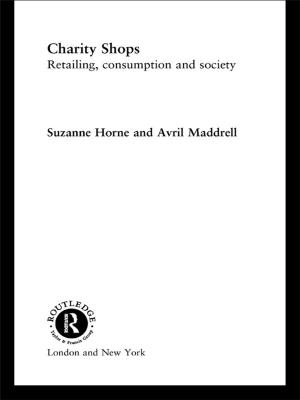Conditioning Behavior and Psychiatry
Nonfiction, Health & Well Being, Medical, Specialties, Psychiatry, Social & Cultural Studies, Social Science, Sociology| Author: | Thomas A. Ban, W. Horsley Gantt | ISBN: | 9781351526890 |
| Publisher: | Taylor and Francis | Publication: | July 12, 2017 |
| Imprint: | Routledge | Language: | English |
| Author: | Thomas A. Ban, W. Horsley Gantt |
| ISBN: | 9781351526890 |
| Publisher: | Taylor and Francis |
| Publication: | July 12, 2017 |
| Imprint: | Routledge |
| Language: | English |
Conditioning is one of the core methods of psychiatry. It is a behavioral method, with a stimulus-response constellation. The stimulus itself can be measured, changed, and combined, and the responses can be measured qualitatively and quantitatively. Conditioning uses the conditional reflex phenomenon. During the conditioning procedure, responses to certain stimuli are acquired where no responses existed previously. Over time behavioral conditioning expanded to include neurophysiological aspects and has been correlated with psychic manifestations. This comprehensive work deals with the conditioning method, covering fully its behavioral, neurophysiological, and psychiatric aspects.The volume is divided into five parts. Part I summarizes present-day knowledge on the neurophysiology of conditioning. Part II sets out the historical sequence in the correlation between psychopathology and pathological brain functions. Part III describes the best-known conditioning techniques applied in human testing, particularly those which are applicable for diagnostic purposes, is discussed. Part IV is concerned with clinical applications of the method and discusses the findings and the implications that it has for psychopathology and therapy or, in general, for psychiatry. Part V contains a critical evaluation of the matter presented, followed by a bibliography and index."Conditioning Behavior and Psychiatry" describes the development of conditioning procedures since the concept was first introduced. It is primarily concerned with the analysis of elementary and complex behavioral observations, of neurophysiological and neuropathological discoveries as seen from the standpoint of psychiatric disorders. The psychiatric view presented is, not purely the Pavlovian, but a modern approach to psychiatry stemming from a Pavlovian orientation.
Conditioning is one of the core methods of psychiatry. It is a behavioral method, with a stimulus-response constellation. The stimulus itself can be measured, changed, and combined, and the responses can be measured qualitatively and quantitatively. Conditioning uses the conditional reflex phenomenon. During the conditioning procedure, responses to certain stimuli are acquired where no responses existed previously. Over time behavioral conditioning expanded to include neurophysiological aspects and has been correlated with psychic manifestations. This comprehensive work deals with the conditioning method, covering fully its behavioral, neurophysiological, and psychiatric aspects.The volume is divided into five parts. Part I summarizes present-day knowledge on the neurophysiology of conditioning. Part II sets out the historical sequence in the correlation between psychopathology and pathological brain functions. Part III describes the best-known conditioning techniques applied in human testing, particularly those which are applicable for diagnostic purposes, is discussed. Part IV is concerned with clinical applications of the method and discusses the findings and the implications that it has for psychopathology and therapy or, in general, for psychiatry. Part V contains a critical evaluation of the matter presented, followed by a bibliography and index."Conditioning Behavior and Psychiatry" describes the development of conditioning procedures since the concept was first introduced. It is primarily concerned with the analysis of elementary and complex behavioral observations, of neurophysiological and neuropathological discoveries as seen from the standpoint of psychiatric disorders. The psychiatric view presented is, not purely the Pavlovian, but a modern approach to psychiatry stemming from a Pavlovian orientation.















